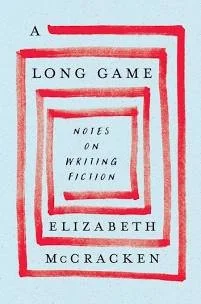5 HOT BOOKS: How the Senate Fails to Protect Democracy, Saving Martin Luther King, Jr. and More
/1. Kill Switch: The Rise of the Modern Senate and the Crippling of American Democracy by Adam Jentleson (Liveright)
Timely, smart, and sharply analytical, Kill Switch addresses how the U.S. Senate has fallen short of what the founders envisioned it to be, becoming mired in gridlock and turning into an institution in which, between the end of Reconstruction and 1964, the only bills stopped by filibuster were civil rights measures. Jentleson was in the trenches as a senior aide to former Senate Majority Leader Harry Reid, so he brings firsthand insight and perspective into Senate procedures as they have evolved. He details intelligent solutions to rescue the Senate’s “deliberative nature, the forum it provided for free and open debate,” and restore it to “a model in which the minority is protected, the majority rules, and the business of the nation moves forward.”
2. Nine Days: The Race to Save Martin Luther King Jr.’s Life and Win the 1960 Election
Stephen Kendrick and Paul Kendrick (Farrar, Straus and Giroux)
In their dramatic, engaging narrative, Paul Kendrick and his father, Stephen Kendrick, focus on an important but overlooked moment in the civil rights movement on the eve of the 1960 election. Young Martin Luther King Jr. was arrested at a sit-in at Rich’s Department Store in Atlanta and sent to Reidsville State Prison for driving without a Georgia license. What followed was a remarkable tale of ingenuity and courage by an interracial trio on the John F. Kennedy team who worked for King’s release; stood up against injustice; appealed to the candidate’s pragmatism, which led to a sympathy call to Coretta Scott King; and won Kennedy critical support from black voters.
3. A Swim in a Pond in the Rain: In Which Four Russians Give a Master Class in Writing, Reading, and Life by George Saunders (Random House)
Less a master class than a clarion call for close reading attention to fiction’s “internal dynamics,” Saunders’ book invites readers into the class he has taught for decades at Syracuse University on classic Russian short stories – three by Chekhov, two by Tolstoy, and one each by Turgenev and Gogol – with special attention to the details of their internal dynamics. “Was writing supposed to be smart or entertaining? Philosophical or performative? Enlightening or fun?” Saunders, then a graduate student, thought as he heard Tobias Wolff read Chekov stories aloud: “Yes, of course, all of those. Suddenly, the potential for fiction as a vital force in the world felt unlimited. It could be everything: the most effective mode of mind-to-mind communication ever devised, a powerful form of entertainment, in the highest sense of that word.”
4. The Uncollected Stories of Allan Gurganus by Allan Gurganus (Liveright)
His debut novel, Oldest Living Confederate Widow Tells All, was published in 1989, featuring the voice of entertaining, 99-year-old Lucy Marsden, and since then Gurganus has made a place for himself on bookshelves between Eudora Welty and Grace Paley. As in his new collection, most Gurganus stories are set in his imaginary town of Falls, as capaciously and slyly evoked by its volunteer tour guide in “The Deluxe $19.95 Walking Tour of Historic Falls (NC), wonderfully read by the author himself here for the Virginia Quarterly Review. Beyond Falls, whether in “Fetch,” featuring a woeful couple and their dog caught in the sea’s undertow off the coast of Maine, or “My Heart Is a Snake Farm,” in which a retired school librarian from Ohio is emotionally enriched by running a Florida motel, with wit and wisdom, Gurganus keys into the secrets of the oddballs among us.
5. W-3: A Memoir by Bette Howland, introduction by Yiyun Li (A Public Space Books)
In the dollar cart at a secondhand bookstore, Brigid Hughes, editor of the literary magazine A Public Space, happened upon a 1974 memoir by a woman about whom she had not heard, read about Ward Three, the psychiatric hospital attached to a Chicago university, and was compelled to bring the book back into print. Li’s introduction praises the book as one “that can be read as an encyclopedia of life in a psychiatric ward, written from within mental turmoil yet with preternatural omniscience.” Interested more in other occupants in the hospital than in herself, Howland is rather like a chameleon, unlike, say, Sylvia Plath in The Bell Jar or Susanna Kaysen in Girl, Interrupted, and her insights and questions are intimate but also have a universal quality. Bette Howland, a 31-year-old mother of two and a part-time librarian, landed in the ward after an overdose in 1968. She subsequently wrote two story collections and received a MacArthur grant in 1984, leaving a few contributions to magazines but no more books. A mysteriously talented writer, she died in 2017, leaving her innovative work that fortunately has been revived so that Howland will have the attention she deserved, even though she did not seek it in her life. “Nothing was original on W-3,” Howland wrote. “That was its truth and beauty.”










